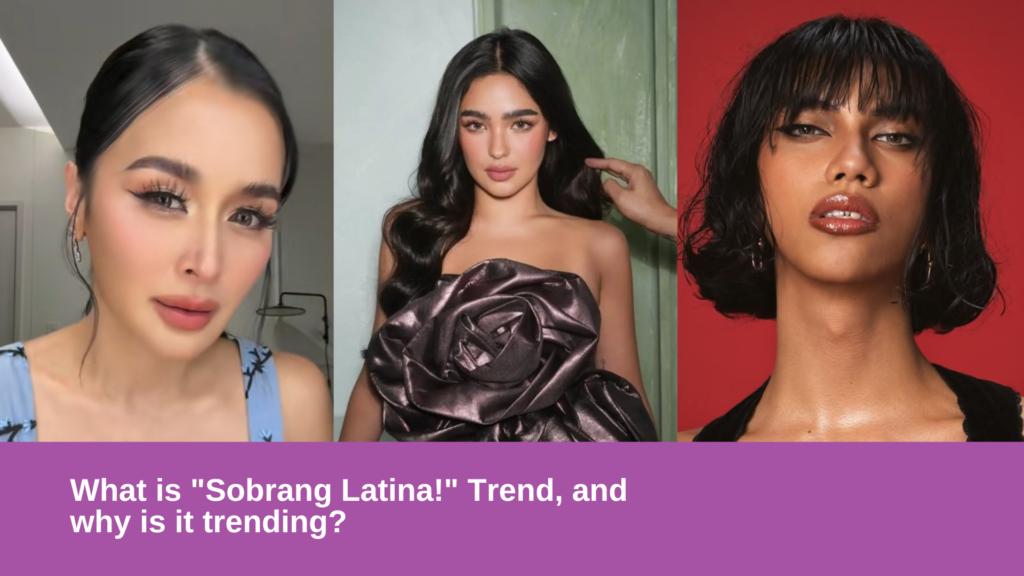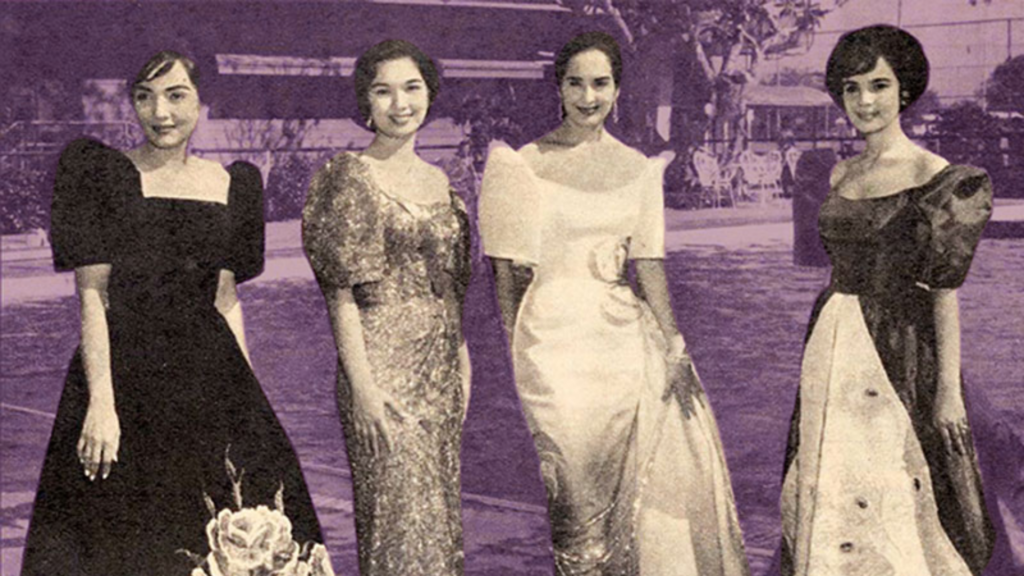“Sobrang Latina!” A Sensible Behavioral and Language Analysis of Sesable’s Sobrang Latina Trend
Written by Justine David Regalado, March 23, 2025
Have you heard these words while you’re scrolling through your social media accounts? Or did someone compliment you in this way?

Video link: https://vt.tiktok.com/ZSrJwT2R6/
Posted in TikTok on January 11, 2025, these phrases from Sesable, a TikTok content creator, went viral and were easily consumed by online users. In the said video, it was noticeable that she was flaunting her make-up inspired by the Latina make-up trend, in which she complimented herself “Sobrang Latina!”
With a high-pitched tone, humorous facial expression, and contagious energy, this viral TikTok video was rapidly adopted by online netizens, most especially the youth, and was implemented in their daily conversation in both digital and physical interactions, using it as an example to compliment others who have the same “beautiful standards” as the Latin Americans.

Courtesy: Kris Bernal, Andrea Brillantes, Mimiyuuuh
The phrase “Sobrang Latina!” also became a way to celebrate beauty and confidence with proudness and a touch of flair. Even popular celebrities like Kris Bernal, Andrea Brillantes, Mimiyuuuh, and others have jumped on the trend.
However, looking at the other side of this trending video was a couple of phrases in which she said “P*tang*na! Ang sarap talaga ng babae na ‘to. Hayop ka talaga. Ang ganda ganda mo. Shet ka talaga. Parang pag unang tingin pa lang sayo lalab*san na ako.”, which adds a sense of exaggeratedness to her self-compliment context.
The heavy usage of profanity or swearing nowadays, as well as sexual and elicit humor such as “Ang sikip mo”, “Sobrang sarap”, and “Napaka-virgin”, despite having a connotative meaning is likely to be used to directly describe someone are also normalized.
With that in mind, from a simple “Ang ganda o gwapo mo” to these alternative crafted phrases, are we getting too creative in how we express ourselves and perceive others? Or is it diminishing the genuineness of complimenting someone?

Courtesy: Philippine Star
Traditionally, Filipino people are fond of giving compliments as it shows our “pakikisama” or companionship, the care and concern that we have with other people, and being friendly. Chara Scroope (2017) pointed out that since most Filipinos back then were conservative, compliments were delivered subtly and deeply rooted in our values of “hiya” and saving face, ensuring that the other party would not be embarrassed and avoid being perceived as speaking harshly.
However, as time goes by, different factors of language phenomenon and trends have shaped and influenced our behavioral way of giving compliments to ourselves and to others.

Courtesy: VICE
One of the main influences is the “Swardspeaking” or “Gaylingo”, as the population of the queer community in the Philippines grew and so gay slang also continues to evolve. Commonly, these words are used for comedic and entertainment purposes but they also influence how admiration, praises, and compliments can be delivered in a more playful, exaggerated, and expressive way.
Second, profanity and swearing. According to Timothy and Kristin (2008), the main purpose of swearing is to express a range of emotions whether being happy, sad, frustrated, or simply just for fun. It may be seen as rude and offending but as time passes it is less marked as negative and is no longer constrained within private interpersonal relationships. Henry (2006) highlighted that swearing as a sociolinguistic activity was progressively accepted in the different domains of literature and social media.
In the context of the “Sobrang Latina!” viral video, the swearing parts of the video intensified her exaggerated self-admiration. This is commonly seen as a strategy in social media content, especially in TikTok, where content creators use swearing, slang, and “overreacting” to make their content more entertaining and hook the attention of the mass viewers.

Courtesy: Ian Murillo, ash, iceeneoo (TikTok videos)
Lastly, the use of sexual terms and elicit humor are also noticeable among today’s youth as they are more open to such topics and are exposed to such privilege of learning “sex education” compared to the traditional Filipino people who consider it taboo. The rise of social media platforms also played a crucial role in amplifying this type of humor that is bold, more daring, and provocative.
All of the said language phenomena and trends above can be seen not only in the viral video of Sesable but also widely embraced by the larger population of youth. However, while many appreciate this bold and explicit style of expression, others may prefer the more subtle way of giving and receiving compliments. It’s a matter of preferences in a diverse demographic of online users, because what is funny to others may be offensive to another.

Courtesy: M2.0 Communications Inc.
Indeed, in an ever-changing society, the language of communication and expression that we have also continues to evolve. This only shows how creative Filipinos are, finding and embracing new forms of social connection. With the rise of emerging trends, we keep pushing our way of expression to its extent, but what if we’re pushing too hard? In these alternative crafted messages with meaning crossing its literal borders, is genuineness compromised?
Are we just taking advantage of abundant linguistics trends or are we going to the more exaggerated and aggressive side? Should we normalize this way of giving compliments?
What do YOUTH think and what do YOU think?
References:
Chara Scroope (2017). Filipino Communication. Cultural Atlas.
https://culturalatlas.sbs.com.au/filipino-culture/filipino-culture-communication?
Flavia Cavaliere (2019). Framing Neapolitan Swearwords in Contemporary AVT Scenario: Swearing as Lingua-cultural Phenomenon. ResearchGate.
Timothy and Kristin (2008). The Pragmatics of Swearing. ResearchGate.
https://www.researchgate.net/publication/249930953_The_pragmatics_of_swearing